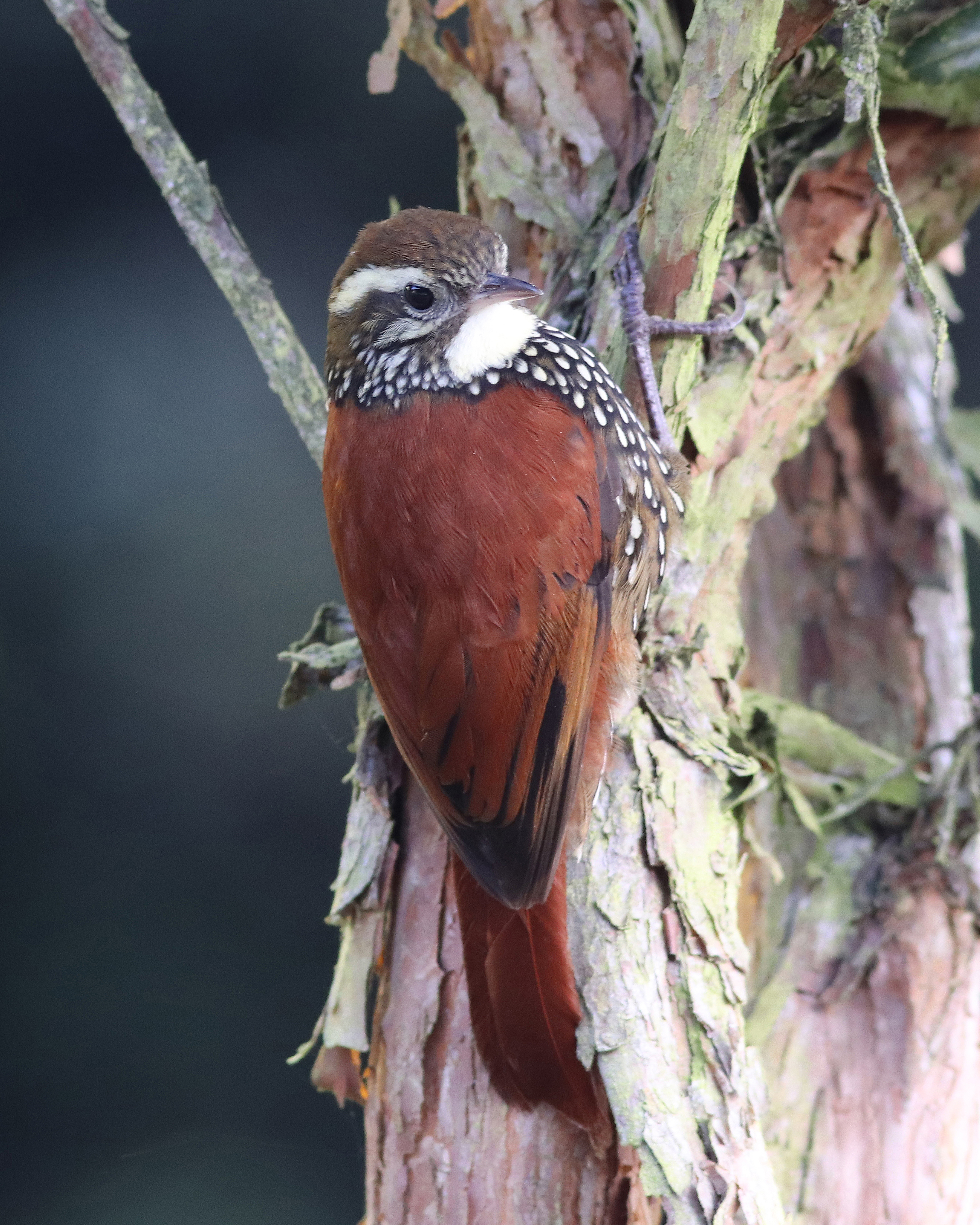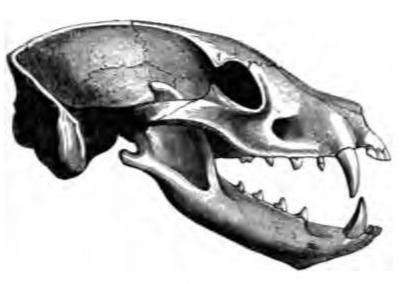|
Blue-backed Conebill
The blue-backed conebill (''Conirostrum sitticolor'') is a species of bird in the family Thraupidae (South American tanagers). It is found in Bolivia, Colombia, Ecuador, Peru, and Venezuela. Its natural habitat is subtropical or tropical moist montane forests. Taxonomy The blue-backed conebill was described by French ornithologist Frédéric de Lafresnaye in 1840. Who placed it in the genus ''Conirostrum'', along with the other species of conebills. It was originally called the Purple conebill, with two of its subspecies, ''C. s. intermedium'' and ''C. s. cyaneum'' being described as different species, the Venezuelan purple conebill and the Peruvian purple conebill respectively. There are currently three recognized subspecies: *''C. s. sitticolor'' - (Frédéric de Lafresnaye, Lafresnaye, 1840): Cordillera Central (Colombia), Central Ranges of Colombia, through Ecuador into the west slopes of the Andes of northwestern Peru *''C. s. intermedium'' - (Hans von Berlepsch, Berlepsch, ... [...More Info...] [...Related Items...] OR: [Wikipedia] [Google] [Baidu] |
Caldas Department
Caldas () is a department of Colombia named after Colombian patriotic figure Francisco José de Caldas. It is part of the Paisa Region and its capital is Manizales. The population of Caldas is 998,255, and its area is 7,291 km². Caldas is also part of the Colombian Coffee-Growers Axis region along with the Risaralda and Quindio departments. Subdivisions Municipalities # Aguadas # Anserma # Aranzazu # Belalcázar # Chinchiná # Filadelfia # La Dorada # La Merced # Manizales # Manzanares # Marmato # Marquetalia # Marulanda # Neira # Norcasia # Pácora # Palestina # Pensilvania # Riosucio # Risaralda # Salamina # Samaná # San José # Supía # Victoria # Villamaría # Viterbo Districts Caldas has 6 districts. Dams In Caldas is the Miel I Dam The Miel I Dam, officially known as the Patángoras Dam, is a gravity dam on La Miel River just south of Norcasia in Caldas Department, Colombia. The dam was constructed between 1997 and 2002 for the p ... [...More Info...] [...Related Items...] OR: [Wikipedia] [Google] [Baidu] |
Mérida (state)
The State of Mérida commonly known simply as Mérida ( es, Estado Bolivariano de Mérida, ) is one of the 23 states of Venezuela. The state capital is Mérida, in the Libertador Municipality. Located in the Western Andean Region, Mérida State covers a total surface area of , making it the fifteenth-largest in Venezuela. In 2011, had a census population of 828,592, the fourteenth most populous. History Pre-Colonial According to recent studies in archaeology, history and anthropology, The Andean region seems to have been inhabited since very remote times (perhaps several thousand years) by unknown groups that have left very few traces. Then, around our era, another ethnic group of great cultural importance arrives in the region, perhaps of Chibcha origin, since they share with these their mythology, funeral and settlement patterns, housing construction, agricultural techniques, etc. When the Spanish arrive in the Andean Cordillera it will be with this second group you wil ... [...More Info...] [...Related Items...] OR: [Wikipedia] [Google] [Baidu] |
White-browed Conebill
The white-browed conebill (''Conirostrum ferrugineiventre'') is a species of bird in the family Thraupidae. It is found in Bolivia and Peru. Its natural habitat is subtropical or tropical moist montane forest Montane ecosystems are found on the slopes of mountains. The alpine climate in these regions strongly affects the ecosystem because temperatures fall as elevation increases, causing the ecosystem to stratify. This stratification is a crucial f ...s. References white-browed conebill Birds of the Peruvian Andes Birds of the Bolivian Andes white-browed conebill white-browed conebill Taxonomy articles created by Polbot {{Thraupidae-stub ... [...More Info...] [...Related Items...] OR: [Wikipedia] [Google] [Baidu] |
Rufous-browed Conebill
The rufous-browed conebill (''Conirostrum rufum'') is a species of bird in the family Thraupidae. It is found in Colombia and far western Venezuela. Its natural habitats are subtropical or tropical moist montane forests and subtropical or tropical high-altitude shrubland Shrubland, scrubland, scrub, brush, or bush is a plant community characterized by vegetation dominated by shrubs, often also including grasses, herbs, and geophytes. Shrubland may either occur naturally or be the result of human activity. It .... References rufous-browed conebill Birds of the Sierra Nevada de Santa Marta Birds of the Colombian Andes rufous-browed conebill Taxonomy articles created by Polbot {{Thraupidae-stub ... [...More Info...] [...Related Items...] OR: [Wikipedia] [Google] [Baidu] |
Conirostrum
Typical conebills belong to the tanager genus ''Conirostrum''. They are small tanagers (9–14 cm) found in the forests of South America. They feed in pairs or small flocks by Gleaning (birds), gleaning insects from foliage. The genus consists of two rather distinct subgenera: The first, ''Ateleodacnis'', possibly deserving full generic status, is confined to lowland areas. They are mostly grey in colour and inhabit deciduous woodlands, mangroves or riverbank habitats. The second group, the nominate ''Conirostrum'' subgenus, inhabits the forests of the Andes. They are somewhat more colourful combining grey or blue backs with rufous underparts. Their thin bills led to them being formerly classified as New World warbler, wood-warblers or honeycreepers but genetic data places them in the tanager family Thraupidae. Taxonomy and species list The genus ''Conirostrum'' was introduced in 1838 by the French naturalists Alcide d'Orbigny and Frédéric de Lafresnaye with the cinereous ... [...More Info...] [...Related Items...] OR: [Wikipedia] [Google] [Baidu] |
Social Dynamics
Social dynamics (or sociodynamics) is the study of the behavior of groups that results from the interactions of individual group members as well to the study of the relationship between individual interactions and group level behaviors. Overview The field of social dynamics brings together ideas from economics, sociology, social psychology, and other disciplines, and is a sub-field of complex adaptive systems or complexity science. The fundamental assumption of the field is that individuals are influenced by one another's behavior. The field is closely related to system dynamics. Like system dynamics, social dynamics is concerned with changes over time and emphasizes the role of feedbacks. However, in social dynamics individual choices and interactions are typically viewed as the source of aggregate level behavior, while system dynamics posits that the structure of feedbacks and accumulations are responsible for system level dynamics. Research in the field typically takes ... [...More Info...] [...Related Items...] OR: [Wikipedia] [Google] [Baidu] |
Black-headed Hemispingus
The black-headed hemispingus (''Pseudospingus verticalis'') is a species of bird in the family Thraupidae. It is found in Colombia, Ecuador, Peru, and Venezuela. Its natural habitat is subtropical or tropical moist montane forest Montane ecosystems are found on the slopes of mountains. The alpine climate in these regions strongly affects the ecosystem because temperatures fall as elevation increases, causing the ecosystem to stratify. This stratification is a crucia ...s. References Pseudospingus Birds of the Colombian Andes Birds of the Ecuadorian Andes Birds described in 1840 Taxa named by Frédéric de Lafresnaye Taxonomy articles created by Polbot {{Thraupidae-stub ... [...More Info...] [...Related Items...] OR: [Wikipedia] [Google] [Baidu] |
Grey-hooded Bush Tanager
The grey-hooded bush tanager (''Cnemoscopus rubrirostris'') is a species of South American bird in the tanager family Thraupidae. It is the only member of the genus ''Cnemoscopus''. It is found in Bolivia, Colombia, Ecuador, Peru, and Venezuela. Its natural habitat is subtropical or tropical moist montane forests. Taxonomy The grey-hooded bush tanager was formally described in 1840 by the French ornithologist Frédéric de Lafresnaye from a sample collected near Bogotá in Colombia. He coined the binomial name ''Arremon rubrirostris''. The grey-hooded bush tanager is now the only species placed in the genus ''Cnemoscopus'' that was introduced in 1919 by the American ornithologists Outram Bangs and Thomas Penard. The genus name combines the Ancient Greek ''knēmos'' meaning "mountain-slope" with ''skopos'' meaning "searcher" or "watcher". The specific epithet ''rubrirostris'' combines the Latin ''ruber'' meaning "red" with ''-rostris'' meaning "billed". Two subspecies are reco ... [...More Info...] [...Related Items...] OR: [Wikipedia] [Google] [Baidu] |
Streaked Tuftedcheek
The streaked tuftedcheek (''Pseudocolaptes boissonneautii'') is a passerine bird in the Furnariinae subfamily of the ovenbird family Furnariidae. It is found in Bolivia, Colombia, Ecuador, Peru, and Venezuela. Taxonomy and systematics According to the International Ornithological Committee (IOC) and BirdLife International's ''Handbook of the Birds of the World'', the streaked tuftedcheek has these eight subspecies: *''P. b. striaticeps'' Hellmayr & Seilern, 1912 *''P. b. meridae'' Hartert, EJO & Goodson, 1917 *''P. b. boissonneautii'' ( Lafresnaye, 1840) *''P. b. oberholseri'' Cory, 1919 *''P. b. intermedianus'' Chapman, 1923 *''P. b. medianus'' Hellmayr, 1919 *''P. b. auritus'' (Tschudi, 1844) *''P. b. carabayae'' Zimmer, JT, 1936 HBW spells the species' specific epithet ''boissonneauii'' (without a "t"), as that is how its namesake Auguste Boissonneau spelled his name. [...More Info...] [...Related Items...] OR: [Wikipedia] [Google] [Baidu] |
Pearled Treerunner
The pearled treerunner (''Margarornis squamiger'') is a species of bird in the Furnariinae subfamily of the ovenbird family Furnariidae. It is found in Bolivia, Colombia, Ecuador, Peru, Venezuela, and possibly Argentina.Remsen, J. V., Jr., J. I. Areta, E. Bonaccorso, S. Claramunt, G. Del-Rio, A. Jaramillo, D. F. Lane, M. B. Robbins, F. G. Stiles, and K. J. Zimmer. Version 31 May 2023. Species Lists of Birds for South American Countries and Territories. https://www.museum.lsu.edu/~Remsen/SACCCountryLists.htm retrieved May 31, 2023 Taxonomy and systematics The pearled treerunner has three subspecies, the nominate ''M. s. squamiger'' ( d'Orbigny & Lafresnaye, 1838), ''M. s. perlatus'' ( Lesson, 1844), and ''M. s. peruvianus'' (Cory, 1913). Description The pearled treerunner is long and weighs . The sexes have the same plumage. Adults of the nominate subspecies have a well-defined yellowish buff supercilium that extends to the nape, a dull reddish brown line behind the ... [...More Info...] [...Related Items...] OR: [Wikipedia] [Google] [Baidu] |
Mixed-species Foraging Flock
A mixed-species feeding flock, also termed a mixed-species foraging flock, mixed hunting party or informally bird wave, is a flock of usually insectivorous birds of different species that join each other and move together while foraging. These are different from feeding aggregations, which are congregations of several species of bird at areas of high food availability. While it is currently unknown how mixed-species foraging flocks originate, researchers have proposed a few mechanisms for their initiation. Many believe that nuclear species play a vital role in mixed-species flock initiation. Additionally, the forest structure is hypothesized to play a vital role in these flocks' formation. In Sri Lanka, for example, vocal mimicry by the greater racket-tailed drongo might have a key role in the initiation of mixed-species foraging flocks, while in parts of the American tropics packs of foraging golden-crowned warblers might play the same role. Composition Mixed-species foraging ... [...More Info...] [...Related Items...] OR: [Wikipedia] [Google] [Baidu] |
Insectivore
A robber fly eating a hoverfly An insectivore is a carnivorous animal or plant that eats insects. An alternative term is entomophage, which can also refer to the human practice of eating insects. The first vertebrate insectivores were amphibians. When they evolved 400 million years ago, the first amphibians were piscivores, with numerous sharp conical teeth, much like a modern crocodile. The same tooth arrangement is however also suited for eating animals with exoskeletons, thus the ability to eat insects is an extension of piscivory. At one time, insectivorous mammals were scientifically classified in an order called Insectivora. This order is now abandoned, as not all insectivorous mammals are closely related. Most of the Insectivora taxa have been reclassified; those that have not yet been reclassified and found to be truly related to each other remain in the order Eulipotyphla. Although individually small, insects exist in enormous numbers. Insects make u ... [...More Info...] [...Related Items...] OR: [Wikipedia] [Google] [Baidu] |


